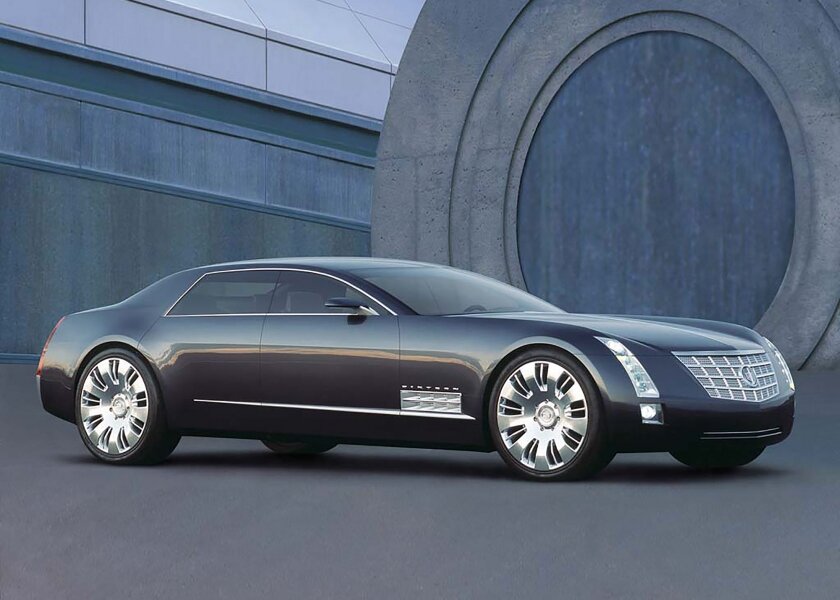1973 Chevrolet Aerovette XP-882
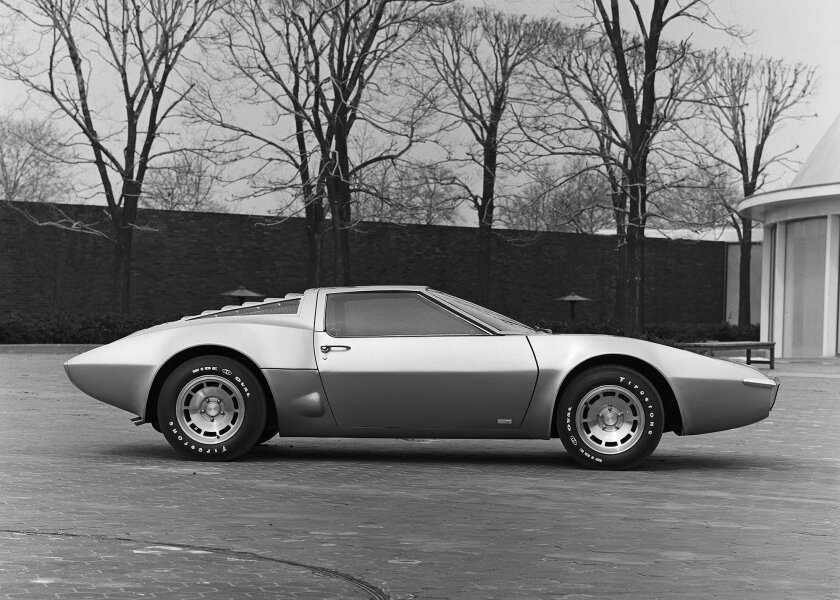
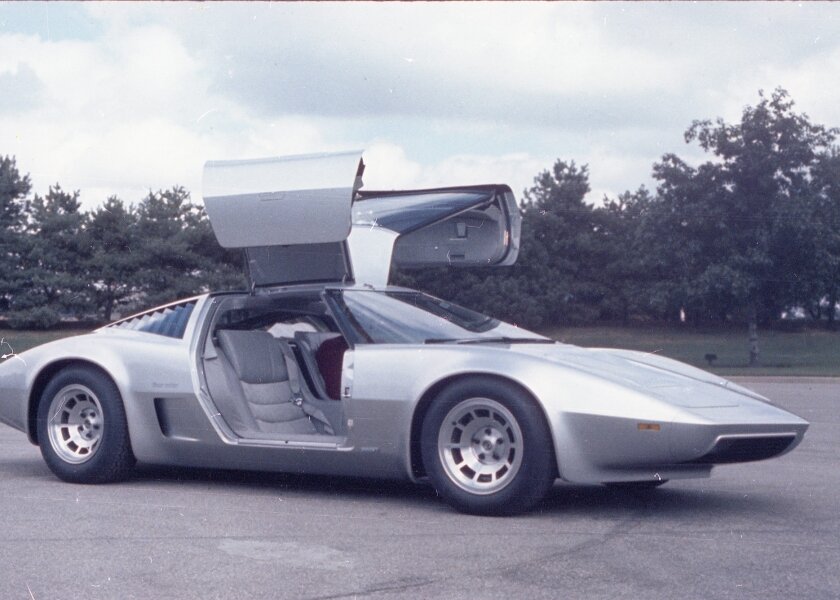
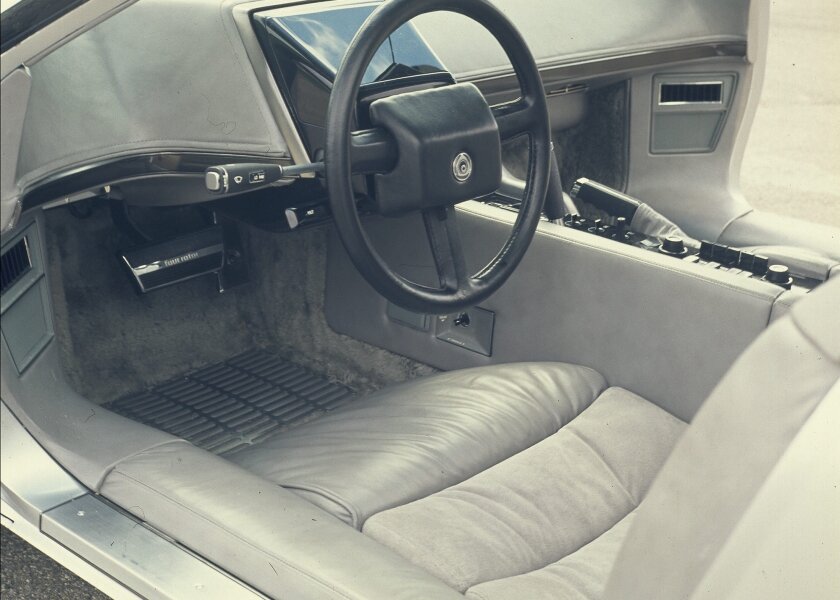

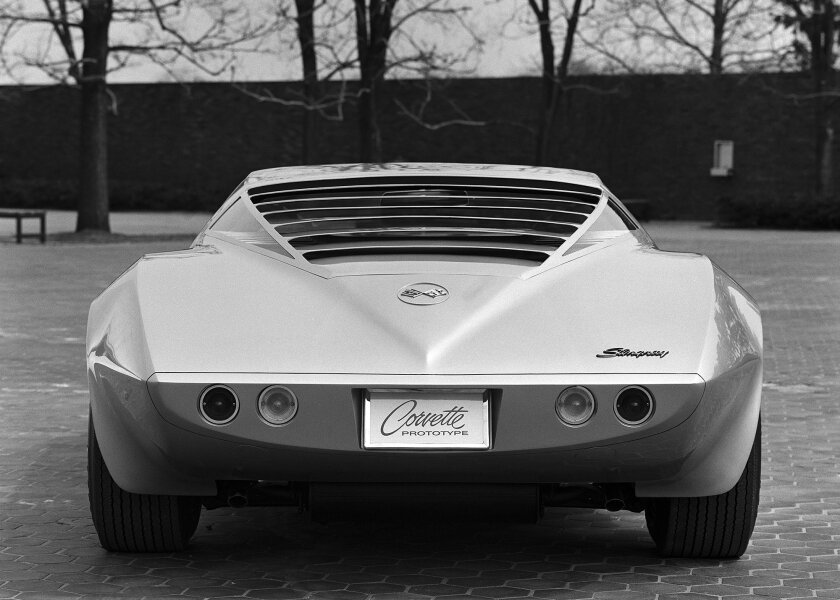

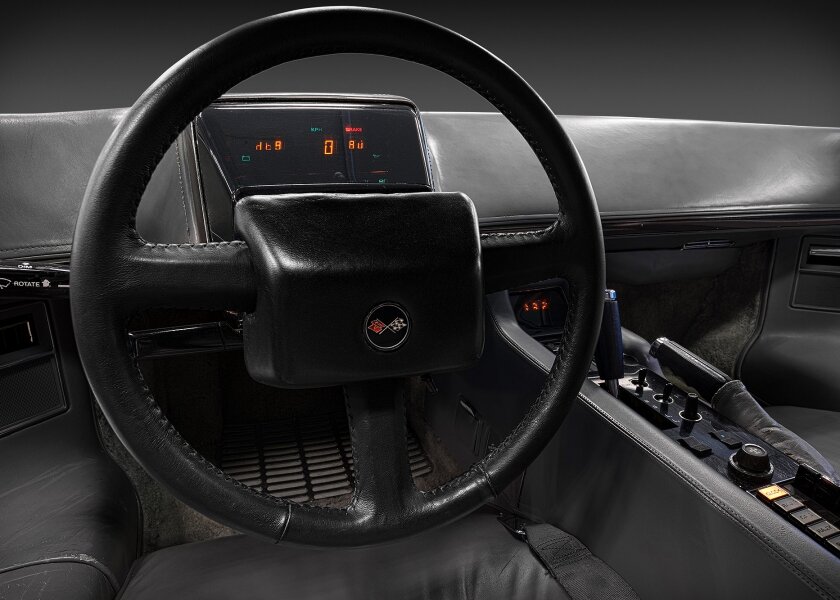
Specifications
Configuration: Mid-Engine
Engine: 400 C.I. V8 (6.6 L)
Transmission: 3 speed automatic
Original Engine: 4 rotor Wankel
Weight: 2600 lbs
The Aerovette started life as the XP-882, a mid engined Corvette, with a 6.2L Wankel rotary engine with four chambers that developed around 400hp. Under the design team of Bill Mitchell, the car was first unveiled as “The Four Rotor Corvette” during the 1970 New York Auto Show. The car featured bi-folding gull-wing doors and a clear cover showcasing the engine bay. Eventually, GM abandoned their rotary technology and replaced the four rotor with a small block Chevy V8, because they anticipated the gas crisis of the 1970s.
The Aerovette’s styling was formed through a wind tunnel to give it a streamlined form. The body of the car was constructed with fiberglass along with a steel and aluminum tubular frame. The Aerovette had an advanced rectangular headlight design that allowed the driver to see the road from further away, while remaining aerodynamic and in a low position. The Aerovette’s doors were a bi-folding gullwing
design that allowed the driver and passenger to enter and exit the vehicle quickly. The “V” design on the windshield was angled at 72° and wrapped around the doors to conceal the front pillars of the car. Glass louvers were placed on the rear quarter panel to aid with vision, and allow heat to be dispersed from the engine compartment. Cool air was channeled into the carburetors from the apertures that were located in front of the rear wheels. The engine’s radiator and air conditioning unit were mounted at the front of the car near the wheels to ensure maximum cooling and efficiency.
The technology in the Aerovette was quite advanced for the time. The interior of the car featured a telescopic steering wheel and digital display that allowed the driver to adjust it to their comfort level. The seats of the car were in a fixed position for weight distribution, but could be adjusted up and down. The driver would press a lever to move the pedals further away or closer to them. The Aerovette came with a number of safety and digital features as well. These included, a warning system that alerted the
driver if the doors were open or closed, if the seatbelts were unfastened, and front and rear energy absorbing bumpers that provided protection in car-to-car impacts up to 10 mph. A button could also be pressed to check on the fuel supply, water temperature, oil pressure, and voltage. The dashboard of the car had small lights to indicate what rpm the engine was spinning at, and would change from green to red when the driver was approaching redline. Additionally, the car had a built in lap timer, clock, calendar, and an am/fm radio.













